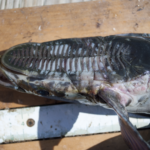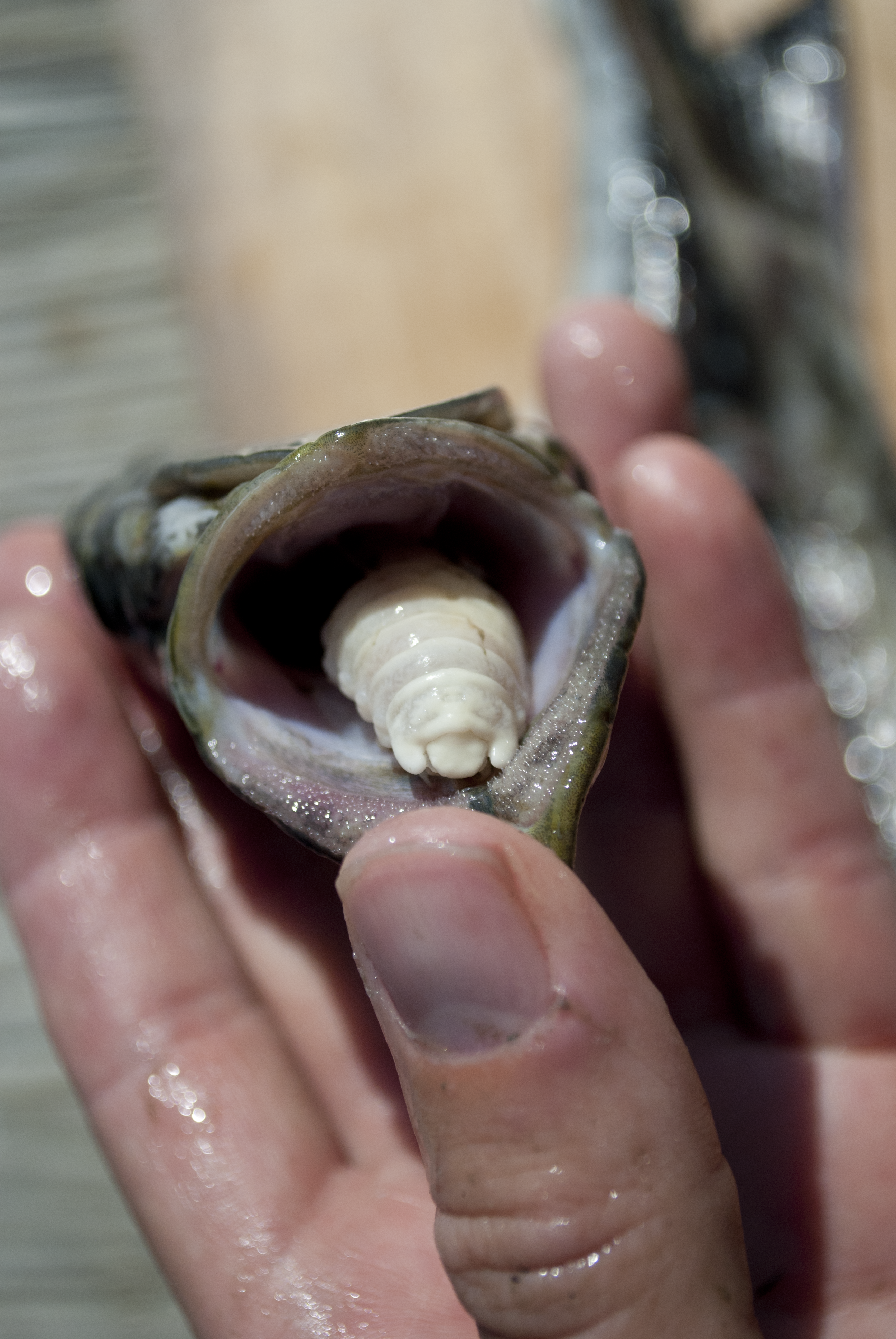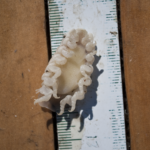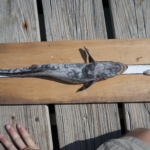I was lucky enough to catch a ride on a commercial gill net boat recently, and while the fishermen were targeting spot (Leiostomus xanthurus), I was hoping to add some species and photographs to our collection. The trip was your typical Core Sound gill net trip, with a few hundred pounds of spot, butterfish (Peprilus triacanthus), kingfish (Menticirrhus spp.), cobia (Rachycentron canadum), spotted sea trout (Cynoscion nebulosus), and what I believe to be a live sharksucker (Echeneis naucrates). Unfortunately the condition of the fish, after 12 hours in the net, made it more difficult to identify than I had hoped. Nonetheless, I thought I would take a side by side shot of a small cobia next to the sharksucker as a way of showing the differences between these two often confused fishes.

Turns out that the condition of both fishes was too poor to really help with teaching identification, but while preparing for the shot, I noticed another interesting animal:
This is a species of parasitic isopod (think rolly-polly), and although I haven’t the slightest clue as to which species, I can tell you that it plays an identical role to another similar isopod, Cymothoa excis. For the uninitiated, this is a parasitic isopod that attaches itself to the base of the tongue, and then sucks blood from the tongue causing it to atrophy. Once the tongue is out of the way, the isopod then sets up shop, attaches to the stub, and replaces the tongue. From this point onward, the fish will use the isopod as it would its own tongue.

In the south eastern US, some anglers refer to Atlantic Menhaden (Brevoortia tyrannus) as “bug mouths,” as they are often infected with a similar parasitic isopod.
This particular isopod survived the death of the fish, and attempted to escape. Whether or not it is capable of surviving on its own, I don’t know. However, in case you ever come across one and have the crazy idea to handle it, be prepared, they are not only very quick to latch on, but very capable of biting you too! It doesn’t tickle.





Thank you for the information. I presume that information about how the parasite affects the fish species was not included, because we do not yet have that evidence yet. Is that correct? I catch several of the fish mentioned as common “victims” of this parasite. I have never noticed any, yet, I will be paying more attention in the future. So, even though we do not conclusively know, do you have an opinion about the long term health and life expectancy on fish having this parasite? Thank you in advance for any information, speculation and opinions you may have on this topic.
Hi Dan,
Unfortunately, as you guessed, we don’t know much about the long term prospects of the fishes infected by these parasites. If I had to speculate, I would say that there doesn’t appear to be any appreciable damage done to the fishes. I’ve seen some pretty old greater amberjack infected, and they appeared quite unharmed.
Thanks for the great question!
The isopod is an adult female of Cymothoa oestrum. If you had looked on top of the gill rakers there should have been a smaller male. You’re correct. The isopod in the Amberjack and most other jacks is the same. You are also right that the isopod does not do that much damage and will not kill the fish.
Mehaden Isopod is Olencira pragustator.
Thank you Ernest, invertebrate biology is definitely not something we are experts on, and we appreciate your help! I’ve been meaning to update this page for some time, and will get your identifications included asap.